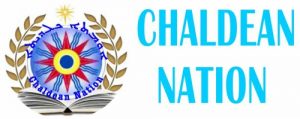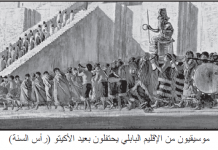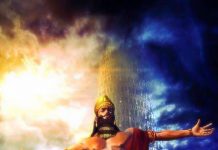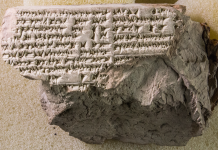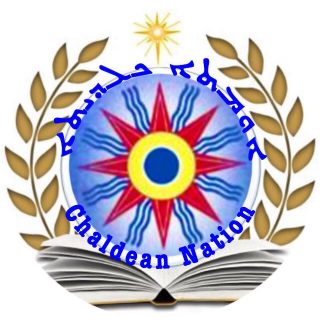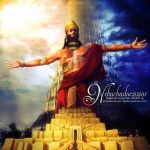By Bishop Dr. Sarhad Y. Jammo
I- The Chaldean Nation
A- Identity: Ancient Iraq, or Mesopotamia, has a rich and complex history and culture. Sumerian and Akkadian languages were succeeded by the Aramaic language. Chaldeans, a federation of Aramaic tribes, lead by Nabu-kadh-nasar conquered Babylon and established a most glorious empire from 612 to 538 BC. Then, Cyrus the Persian conquered Babylon, followed by Alexander the Great, then Parthians, Persians, Arabs, Mongols and lastly Turks. Finally, Iraq reached independence a little after 1921 AD forming a sort of modern unified state with its diverse ethnicities and cultures, among them the Chaldean component.
Who and what are the Chaldeans of Iraq? Analyzing their language, religion, and geographic habitat we rightly conclude they are the descendants of the ancient inhabitants of Mesopotamia. Thus, compared to Arabs and Kurds and other indigenous ethnicities they are the heirs of ancient Iraq’s legacy and the living remnant of its primordial culture.
Based on what facts do we make this assertion?
R. 1) The Chaldean language: The great majority of these Chaldeans do speak, until the present time, a particular idiom of the Aramaic language, proper to them only. Though we can notice in its grammar and vocabulary little local variations, that proper vernacular is their common millennial language, transmitted from parents to children. The adequate explanation for this fact is that this language precede all the foreign invaders of Iraq, connecting the Chaldeans of today directly to the Chaldeans of Nabu-kadh-nasar, to Babylon and its Tower dealing with the issue of language origination. Indeed, they are the heirs of ancient heritage of Mesopotamia.
The Chaldean Language existed only in Iraq: It is thus found solely on its native land and people and their children (wherever they are), and cannot be a derivative of any foreign language like the Syriac. Syrians (habitants of Syria) have no vernacular at all, how could Chaldeans learn it from them?! Ma’lula maybe a touristic attraction. That is all!
Syriac (Meaning the language of Syria) therefore is the language of the Schools that thrived in the ancient Roman Province of Syria until the Islamic conquest, encompassing students and idioms from different neighboring countries. Chaldeans, being part of the body of alumni and teachers, had a good share in forming that pattern of school language. Syriac, therefore, is the Christian Aramaic scholastic idiom, not the living language of people. Consequently, Syriac may remain for the Chaldeans, as well as for the international scholars, as a precious reference, a valuable library and museum for the Christian patrimony.
Chaldean is the living and ancestral language of the Chaldean people, originating from Babylonia (See the story of the Tower of Babylon in Genesis, XI), standing fully on its own historic background. That is the reason why Baghdeda (Qaraqosh), belonging to the same indigenous people of Iraq, speaks Chaldean not Syriac.
2) The Scriptural Theological vision: Christians of Iraq, themselves, are not only the followers, but they are somehow the co-founders, of the Scriptural (Judeo-Christian) religion. The Chaldean Abraham of Ur is the recognized pioneer, the one who carried the unique heritage of his land. That same patrimony the contemporary Chaldeans carry on. Moreover, the Christians of Iraq must be the descendents of its ancient population, because with the conquest of Iraq by the Arab Muslims (sholtry after 620 AD), freedom of religion became the monopoly of Islam.
3) Mesopotamia’s ancient heritage, including the first 12 chapters of Genesis, are the major reference for the cultural identity of the Chaldean nation. Thus, science, humanities including arts, theology and a specific divine call toward Universal Salvation belongs to the core of Chaldean identity. Babylon claims to be the Gate of ‘El, the Scriptural God.
B- Roadmap for the Chaldean Nation
1) Declaring always, unambiguously and worldwide, by all Chaldean institutions most of all the Chaldean Patriarch and Bishops, inside and outside Iraq, that Chaldeans are a distinct and autonomous indigenous nation within Iraq, entitled to all constitutional rights overflowing from that identity: cultural, financial, educational, political, and territorial. Furthermore, those Iraqis who consider themselves attached to the primordial Iraq and its identity and culture ought to be welcomed to join the Chaldean Nation, especially those residing today around Babylon-Nasiryya.
Urgent Situation: Given the actual tensions in Iraq between Central Government and Kurdistan Region, Chaldeans, with other indigenous components of Iraq, should call for an Iraqi national conference, endorsed internationally, to settle the organization of Iraq with justice for all.
2) Promoting the Chaldean Language at every level, by providing teaching material to educational institutions, and by encouraging Chaldean folklore and liberal art compositions and their performance in Iraq and all over the world.
3) Forming various organizations that embody the Chaldean identity and its goals, targeting the youth in particular way. A Chaldean elite must be immediately formed to lead the Chaldean Cause. San Diego could be the most suited center for that purpose.
4) Asking the Government of Iraq (and Kurdistan), by legal means, to provide historic reparations for flagrant injustice done to Chaldeans through history, marked by crimes against humanity and genocide, even after the constitution of modern Iraq around 1921 AD. In concrete application, Chaldeans ought to legally request one province in South Iraq, around Nasiryya/Ur & Babylon, and one province in Kurdistan, going from Karamless through the Nineveh Plain to Peshkhabur.
5) Forming an international Chaldean Congress, (I propose) seated in San Diego, CA that promotes, organizes and supervises the Chaldean short and long-term goals mentioned above.
II- The Chaldean Church Identity and Roadmap
A- Identity: Because Babylon/Ur is practically a constant counterbalance to Jerusalem (See Jesus’ genealogy in Matthew), the Church of Kokhe (near Ctesiphon, then, after 80 AD becomes situated near Seleucia, due to the change of course of Tigris River) is not only of Apostolic foundation, but it is itself a relevant station in the formation of the divine salvation. Chaldeans are the chosen nucleus for the plan of divine redemption. The Magi and the Star in the East, are ingredients in the process of Messianic fulfillment.
Identity Features
1) Scriptural continuity: Chaldeans are at the origination of the scriptural process,
a) first, in its initial phase with Abraham and his son and grandson, and subsequent development until its climax and fulfillment in Jesus of Nazareth, the Messiah according to the prophecy of Daniel (about the Son of Man) and 2 Isaiah (ch. 42) about the Servant;
b) then in its Christian Era, reaching to Chaldeans soon after Pentecost by the preaching of the Apostles: Thomas, Thaddeus, and the disciple Mari. The Magi and the pilgrims at the Pentecost were certainly the first heralds.
2) Cultural continuity: The Chaldean Church being the only church whose people speaks until now the Aramaic language. Many Chaldeans today are so drastically deceived to call their own language Syriac, though the ancestral tongue they speak does not even exist in Syria and never did!
3) Liturgical continuity: The Anaphora of Addai and Mari is the only Apostolic Anaphora in continuous use until now form Apostolic time. Also, they are of Apostolic era as well the Morning and Evening Liturgical Prayers of the Chaldean Liturgy, being based on a core that existed since the time of Jesus. The authentic Image of the Lord, and the whole issue of Iconography, with its theological and liturgical meaning, is a relevant part of the Chaldean Apostolic legacy.
4) Evangelical continuity: The only church who through the whole of its history is without a Christian king or state, a heroic nation living constantly in the ambiance of the Kingdom of Heaven. This nation/church, having faced paganism and Islam for many centuries, should be prepared today to face the new-paganism and the complex dialectic of our time.
5) Missionary marvelous achievement: Covering half of the known world until the twelve centuries, the Church of the East shrunk to its original Mesopotamian core in the 13-14th century (Tamerlane death in 405 AD is a landmark). It is imperative for her to resurrect itself to its own genuineness and divine call, preparing itself to a new ambitious missionary course in the contemporary third Millennium.
Conclusion: The rise and fall of the Chaldean nation and church depends basically on the dynamics of the Chaldean ancestral language and the Chaldean Apostolic liturgy.
B- Roadmap: Chaldean Church course through history: The Roman Empire agreed with the Persian Empire to have River Euphrates as their border. A missionary field has been therefore outlined and shared, from Mesopotamia to Persia, and to India, extending later up to China, even Korea and Japan. Because of that historic reality, the Pontificate of Kokhe has been called “the Persian Church” or “Church of the East”. With the Mongolian devastation, climaxing with Tamerlane (1405 AD), the Church of the East became a shadow of itself, and, realistically, correctly and fittingly, reaffirmed with Sulaqa’s unity and revival movement its original core, and claimed its primary identity under the banner of the “Chaldean Church”, then reasserted its primordial headquarters as being “The Patriarchate of Babylon”. The Chaldean Church has contained and may always contain non-Chaldean individuals, parishes or dioceses, but its core, culturally and spiritually, was and must remain the Chaldean heritage.
1) Urgently needed A solid and comprehensive liturgical Reform: The Lord said: “Do this in memory of me”. The canonical reform of 2006 fulfills the command of the Lord faithfully. It is available to be revisited, studied and compared, in continuity with the scriptural and apostolic tradition of the Chaldean Church, coupled as well with a fitting organic and harmonic growth. The latest Missal authored recently by the Patriarchal Synod, and actually in common use, is by now well experienced. I propose hereby the call by the Patriarch to a special synod for the Chaldean Renaissance (during the year 2018), to deal mainly with the Liturgical matter deciding it for good, but to deal also with the issue of the future of the Chaldean Church and nation. I Propose hereby as well to appoint promptly a Secretary General for that Synod, in order to enact a serious and adequate process of preparation and performance.
2) The reform of clerical and monastic institutions: The Patriarchal Seminary, the Monastic Institutions of the Chaldean Church at the Patriarchal level, all of them, are in a very critical condition. A drastic action must be taken immediately. A Patriarchal Envoy must be urgently assigned to find a solution. The Missionary Apostolate must be part of the Monastic Reform.
3) The Chaldean Language is the cultural link among all Chaldean Churches in the world: Thus, it must be given the major segment in liturgical celebrations and gatherings. It is suicidal to make Arabic a competing rival to Chaldean, especially in the Western countries.
4) A settled understanding and recognition between Chaldean and Assyrian dioceses and parishes must be formulated and adopted: Without compromising the Chaldean identity of the people and Church of Mesopotamia, a practical and fair understanding between contemporary Chaldeans and Assyrians must be reached and adopted.
5) A Patriarchal Reconciliation Commission, to resolve conflicts of interest between dioceses and hierarchs: A Committee must be formed, especially from retired bishops and priests, to resolve intricate situations of disagreement between bishops and dioceses, or a priest or monk with a Hierarch, avoiding as much as possible to condemn the workers of the Lordly Vineyard, reaching out to charitable reconciliation.
In the Aftermath of the Referendum On Kurdistan
A Draft of Statement Presented to the Holy Chaldean Synod
by Bishop Sarhad Y. Jammo
Now that the Referendum regarding the Independence of Kurdistan has occurred, and its results announced, it is incumbent on the Chaldean leaders to declare their position in that regard, concerning their people. Myself, as a Chaldean Bishop, involved in our Chaldean people issues, on national and ecclesiastical matters, I realize it my duty to provide publicaly my comments and vision, in this decisive juncture of history. Here is a basic outline:
1- Since the collapse of the Ottoman Empire, the Chaldeans were initially passive in regard to their national identity and rights, the Assyrians were very active, and tragically so. Chaldean leadership’s conflicting policy confused many Chaldeans in their identification and their partisan belonging, and still does. The Kurds meanwhile asserted their identity and rights with a sustained struggle for the past one hundred years and more, reaching now the stage of decision making, which must include Chaldeans (and Assyrians).
2- The Kurds are entitled to their national identity and rights, but so are the Chaldeans and the Assyrians and other historic components of the Iraqi society. Recognizing one segment’s rights should not be at the expense of someone else rights. Bluntly put: Kurds, claiming today their rights, must respect as well the Iraqi first indigenous segment, the Chaldeans, who were the allies of the Medes, the Kurds’ ancestors, since 612 BC.
3- Speaking for myself, I am Chaldean, claiming my full national rights in Iraq, including cultural, religious, financial, and most of all territorial rights, both in South and North of Iraq, including Kurdistan Region. I believe many Chaldeans–probably the majority of them– especially if informed about the matter, would take similar stand. In details:
a) Our language, a genuine Iraqi tongue, is Chaldean, not Syriac (which means unavoidably “of Syria”). Surely, we shall fully respect those who would like to be called Syrian and Syriac.
b) Our nationality is Chaldean. It is not that miserable formula-conspiracy, invented in Kurdistan, the Chaldean Syrian Assyrian nomenclature.
c) Chaldeans are culturally, the main remnant of ancient Iraq, expressing through their ancestral Chaldean language a consistent and unbroken continuity for at least three thousand years. Their spiritual heritage, manifested mostly in their way of worship (liturgy), is as well a religious line of continuity that goes back to Abraham of Ur and ancient Babylon.
d) Many Chaldean villages in today’s Kurdistan have been occupied by the Kurds, mostly during the genocide of 1915 and at the time of Saddam. They still are. Thus, what is called now Kurdistan is not exclusively the Land of the Kurds. Chaldeans have good share in it. Therefore, territorial, cultural, and administrative entitlements must be recognized for the Chaldeans.
Conclusion: Chaldeans, inside and outside Iraq, numbering today one million people, must be included in being recognized and treated as such, I mean as Chaldeans, in the formulation of the future of Iraq. Thus, the need for a comprehensive national Iraqi conference, endorsed internationally, to organize the future of Iraq with justice for all of its components.
Bishop Dr. Sarhad Jammo
Published by: http://www.ChaldeanNation.com
